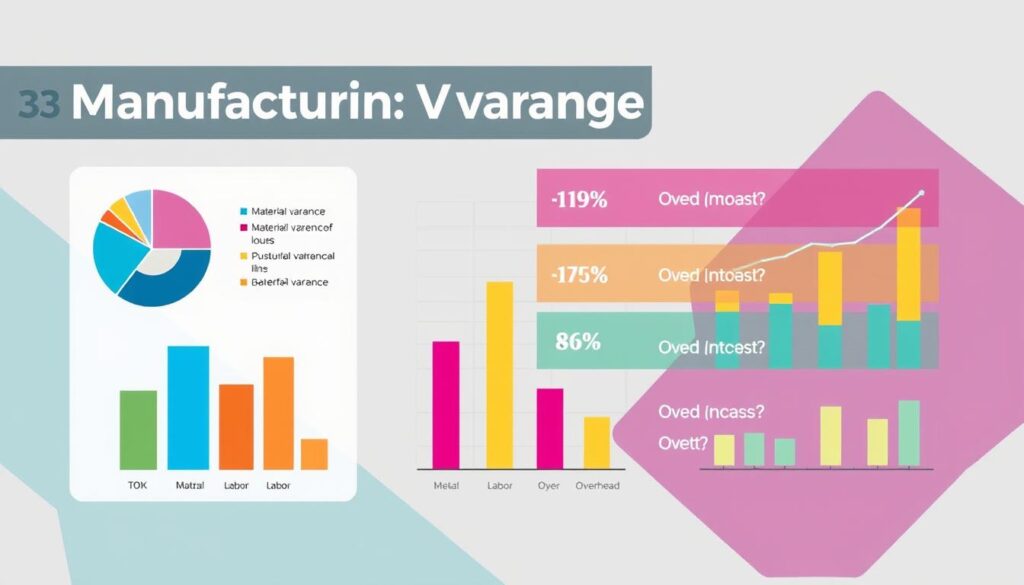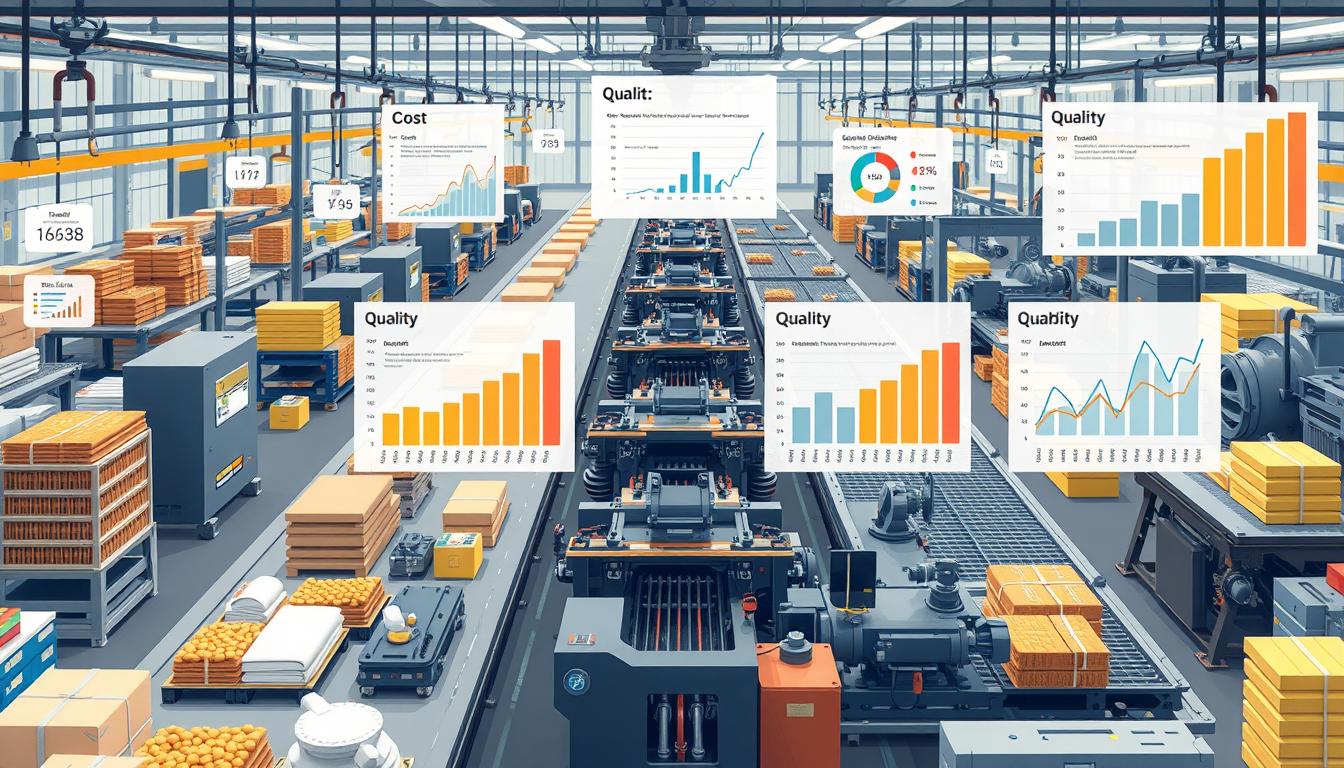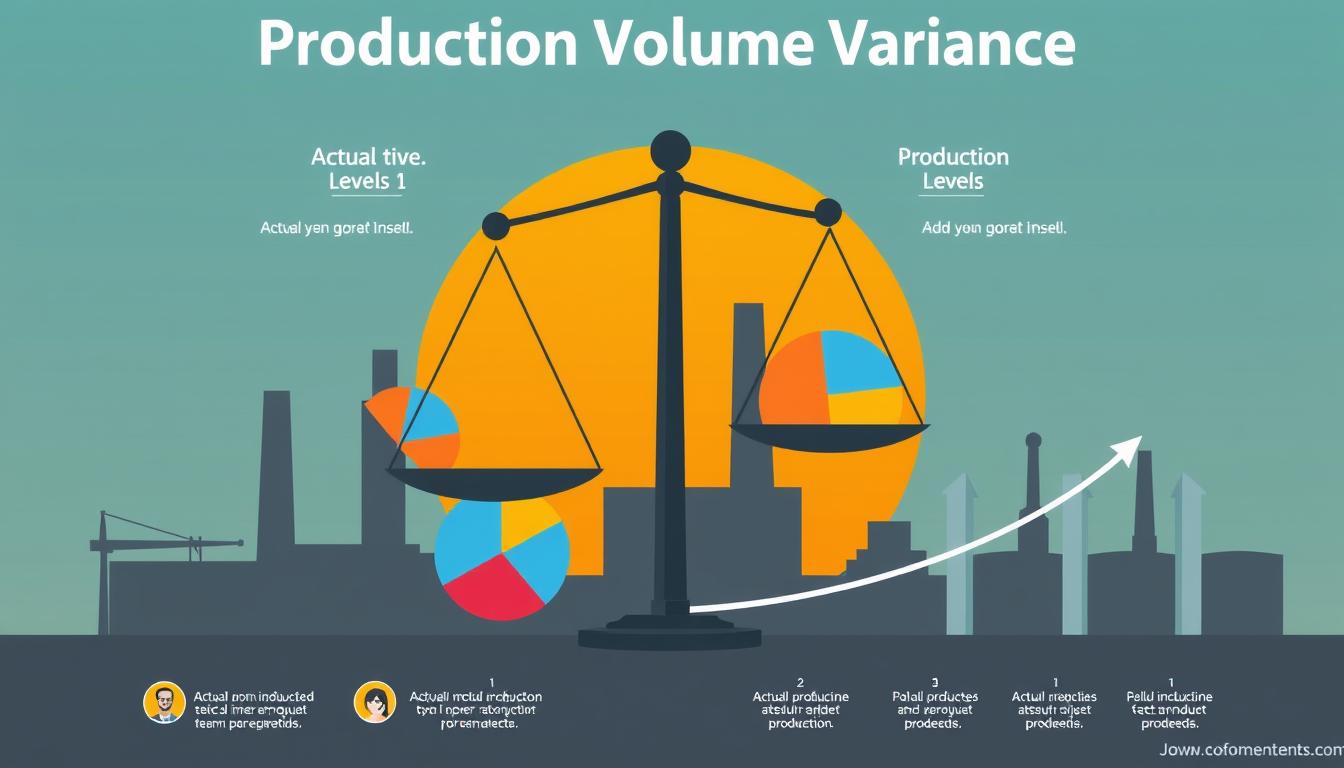Have you felt uncertainty on your production floor? It’s where decisions matter a lot. Raw materials turn into products here. Every cost variance impacts your bottom line. Understanding these variances means getting the heart of your production. It helps manage challenges, control costs, and boost efficiency.
For both seasoned managers and newcomers, knowing manufacturing variances is key. It shines a light on better choices. It’s not just strategy; it’s about improving non-stop. Recognizing variances lets you empower your team, use resources well, and improve production. Every new understanding brings you closer to top performance.
Key Takeaways
- Manufacturing variances are essential for assessing production costs.
- Identifying types of manufacturing variances can improve operational decisions.
- Understanding variances helps in recognizing areas for cost control.
- Effective analysis of variances can lead to enhanced efficiency.
- Ongoing monitoring of variances is crucial for sustained improvement.
- Data-driven insights foster a culture of continuous enhancement in manufacturing.
What Are Manufacturing Variances?
Manufacturing variances are key in assessing how well manufacturing processes perform. They show the gap between expected and real costs in production. Knowing about these variances helps companies spot where costs are higher than planned.
For instance, a material variance happens if the real cost of materials is way above what was budgeted. This knowledge is crucial for managing costs well and planning finances in manufacturing.
Definition of Manufacturing Variances
Manufacturing variances highlight the differences between planned costs and actual expenses in manufacturing. These differences can come from changes in labor rates, material prices, or how efficient processes are. By examining these variances, companies can better understand how to control costs.
This understanding helps improve their financial performance overall.
Importance of Understanding Manufacturing Variances
Grasping the concept of manufacturing variances is very important. It gives you the tools to better control manufacturing costs. When you find variances that don’t look good, you can take steps to fix them.
Regularly looking into these variances improves budget planning. It also helps in allocating resources smarter, boosting the financial health of the company.
| Variance Type | Calculation Method | Example Impact |
|---|---|---|
| Volume Variance | (Actual Quantity – Planned Quantity) x Planned Mix x Planned Rate | – $3.8M |
| Mix Variance | Actual Quantity x (Actual Mix – Planned Mix) x Planned Rate | – $228K (Canned Corn: -$252K) |
| Rate Variance | (Actual Rate – Planned Rate) x Actual Quantity | $2.6M |
Common Causes of Manufacturing Variances
It’s important for businesses to know why manufacturing variances happen. These issues can come from many places. They affect the supply chain, costs, and how things are made.
Fluctuations in Raw Material Prices
Changes in the cost of raw materials can really impact how much making things costs. Industries everywhere are seeing prices go up. This is because of market instabilities and big global events. For instance, wheat prices have risen a lot because of supply chain problems and politics. Companies need good stock control and planning to handle these changes. This helps keep making things consistent and profitable.
Labor Cost Variations
Sometimes labor costs change unexpectedly. This could be due to wage hikes or shifts in how efficient workers are. The COVID-19 pandemic led to fewer available workers worldwide. This has made it tough for all kinds of jobs to find the people they need. Companies might have to pay more per hour to get good workers. This can mess up their budgets and plans.
Supply Chain Discrepancies
Problems with the supply chain can show up in different ways. You might see delays or things not being as good as they should be. These issues mess with keeping track of stock and can stop production. Working closely with suppliers and checking everything daily can help. It makes operations run more smoothly and matches up with making goals.

Types of Manufacturing Variances
Manufacturing variances deeply affect a company’s financial health. Knowing the different types helps firms pinpoint and fix inefficiencies. We will explore the key manufacturing variances here.
Material Variances
Material variances happen when actual material costs differ from the standard ones. This could be due to changing market prices or quality issues. For example, if denim’s standard cost is $3 per yard but is bought at $2.50, you save $0.50 per yard. Keeping an eye on material variances is vital for managing expenses and boosting profit.
Labor Variances
Labor variances show the gap between actual and planned labor costs. They can come from paying different wages to skilled or unskilled workers. Suppose an unskilled worker costs $6 less per hour than planned; this shows good labor cost management. Studying labor efficiency and wage variances gives a full view of labor expenses.
Overhead Variances
Overhead variances occur when there’s a mismatch between predicted and real overhead expenses. These can include costs for utilities, maintenance, and overall manufacturing overhead. Spotting issues in variable manufacturing overhead efficiency can reveal areas to improve. Tracking overhead variances aids in better budgeting and managing manufacturing costs.
Efficiency, Volume, and Price Variances
Efficiency variances highlight the gap between expected and real production levels. Volume variances show differences in planned and actual sales amounts. Meanwhile, price variances look at the discrepancy between expected and real prices of materials and labor. Understanding these variances helps firms tackle production challenges and fine-tune operations.

Strategies for Managing Manufacturing Variances
Effectively managing manufacturing variances is key for better operations and cost control. Implementing robust data collection techniques is a foundational step. Gathering accurate data on costs, labor, and productivity lets you analyze variances. This reveals where planned budgets and actual performance differ. Understanding these differences helps you find areas to improve, boosting manufacturing efficiency.
Data Collection and Analysis Techniques
Using enterprise resource planning (ERP) systems is vital for managing variances. ERP systems provide real-time monitoring and analytics. This gives insight into costs and processes. With ERP software, tracking material, labor, and overhead costs is easier. This helps keep production costs under control. Analyzing this data regularly supports better decision-making and continuous improvement.
The Role of ERP Systems
ERP systems are not the only tools for continuous monitoring. Industrial Internet of Things (IIoT) devices also play a crucial role. These tools collect and send real-time data on how equipment and products are performing. This gives you a live view of your manufacturing. Quick actions can be taken to fix any issues, enhancing efficiency. The blend of IIoT tools and ERP systems ensures smooth variance management and improved manufacturing output.
Continuous Monitoring with IIoT Tools
The combination of good data collection methods, effective ERP systems, and IIoT tools is crucial for today’s manufacturing. Embracing these technologies and processes not only improves variance management. It also leads to more profit and success. Using these strategies lets you adapt and succeed in the competitive manufacturing field.









